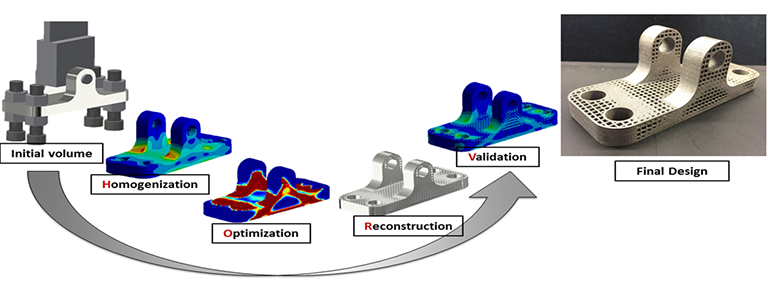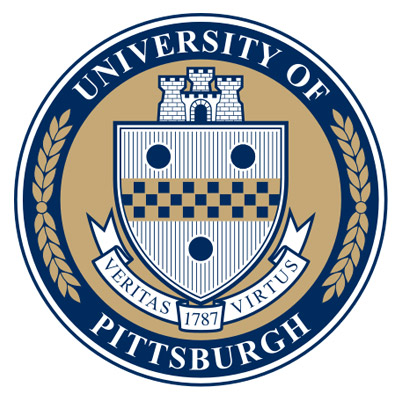


This project seeks to develop an integrated design suite with built-in design aids for various AM manufacturability requirements.
Problem
Additive manufacturing (AM) technologies are capable of producing complex geometries and topologies. AM processes also enable parts to be designed largely without regard to manufacturability constraints. These unique capabilities greatly expand the limited designs allowed by traditional machining methods, however existing CAD/CAE software packages have not taken full advantage of the enormous design freedoms offered by AM. The ability to design specifically for AM would enable engineers and designers to design parts with performance enhancements, such as reduced weight, and would increase the industrial use of AM technologies.
Objective
The goal of this project is to develop an integrated design suite with built-in design aids for various AM manufacturability requirements and new topology optimization capabilities for high potential AM applications. Specifically, the project seeks to develop and implement design aids and cost models for general AM processes including, but not limited to, the EOS direct metal laser sintering (DMLS) process and the ExOne binder jetting process (BJP) into the ANSYS SpaceClaim module.
Technical Approach
To develop and implement the design aids and cost models, new lattice structure design optimization (LSDO) functionalities which include natural frequency, thermal cooling, and simultaneous constrained stress and thermal cooling optimization are being developed. The technical approach also involves implementing the new and existing LSDO functionalities, including minimum compliance and constrained stress optimization, into the ANSYS topology optimization module. The developing integrated design tool is being applied to optimize the design of several high potential applications, such as lightweight laser systems, support structures for AM parts, and lightweight multifunctional components for motion control systems, missiles, and engines.
Accomplishments
A total of ten design for additive manufacturing (DFAM) rule checks were implemented into ANSYS SpaceClaim, released in May, 2017 (R18.1). These DFAM checks are the most common ones, enabling designers to check their designs before printing. Cost models for the EOS DMLS, machining, and casting were developed to compare the costs using the three different manufacturing methods. In addition, new LSDO capabilities including natural frequency optimization, thermal cooling optimization, and simultaneous constrained stress and thermal cooling optimization have been developed and validated successfully. Additional work is needed to model the pressure drop for fluid flow through lattice structures more accurately.
Existing and new LSDO capabilities were implemented into the ANSYS simulation software. Some of these capabilities (i.e. minimum compliance, natural frequency, constrained stress, and thermal conduction) have been released in beta version by ANSYS in R18 and some of them will require more testing and development before they are ready to be released. The LSDO software has been applied to various high potential design applications including lightweight motion control, missile and engine components, as well as a lightweight laser systems and AM support structures.
Milestone Video
Project Participants
Project Principal

Other Project Participants
- ANSYS
- United Technologies Research Corporation (UTRC)
- Honeywell
- Materials Sciences Corporation
- Aerotech
- The ExOne Company
- EOS / Marcus Machinery
- AMRDEC
- Arconic
- Oberg Industries
- Texas A&M University
Public Participants
- U.S. Department of Defense
- National Science Foundation
- U.S. Department of Energy
